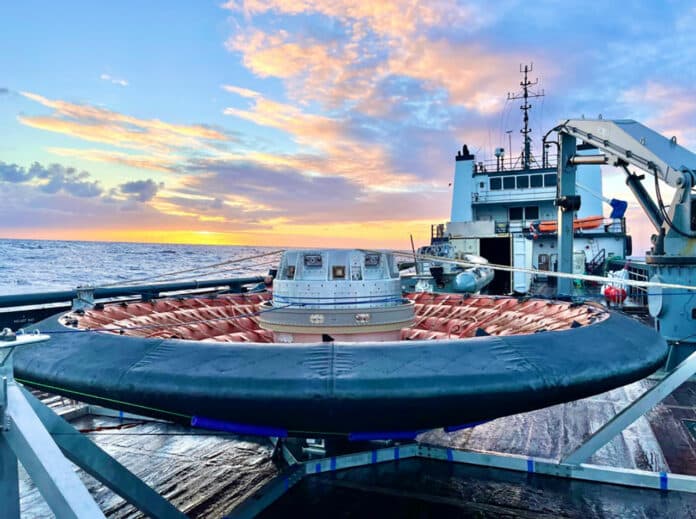NASA has made an impressive achievement in space exploration with the successful demonstration of an innovative inflatable heat shield. The technology could allow larger spacecraft to safely descend through the atmospheres of celestial bodies like Mars, Venus, and even Saturn’s moon, Titan.
The Low-Earth Orbit Flight Test of an Inflatable Decelerator (LOFTID) launched on November 10, 2022, aboard a United Launch Alliance (ULA) Atlas V rocket for low Earth orbit test. As it flew over the Mediterranean Sea, LOFTID separated from the ULA Centaur upper stage. At this point, LOFTID expanded to its full width.
The aeroshell then came screaming back from space at more than 18,000 mph, reaching temperatures of nearly 2,700 degrees Fahrenheit. After slowing down from 18,000 mph to less than 80 mph, LOFTID deployed its parachutes before gently splashing down in the Pacific Ocean near the Hawaiian islands.
This aeroshell technology, also known as a Hypersonic Inflatable Aerodynamic Decelerator (HIAD), has been in development by NASA for over a decade. In addition to this successful tech demo, NASA is investigating future applications to develop technologies for small satellite reentry, aerocapture, and cislunar payloads.
“This was a keystone event for us, and the short answer is: It was highly successful,” said LOFTID Project Manager Joe Del Corso. “Our assessment of LOFTID concluded with the promise of what this technology may do to empower the exploration of deep space.”
Upon recovery, the LOFTID team recently held a post-flight analysis assessment of the flight test at NASA’s Langley Research Center in Hampton, Virginia. The team discovered LOFTID appeared pristine, with minimal damage. According to Del Corso, this means that the performance of LOFTID during the test was nothing short of ‘flawless.’
“The LOFTID mission was important because it proved the cutting-edge HIAD design functioned successfully at an appropriate scale and in a relevant environment,” said Tawnya Laughinghouse, manager of the TDM program office at NASA’s Marshall Space Flight Center in Huntsville, Alabama.
By deploying the inflatable heat shield, NASA aims to address the challenges associated with atmospheric reentry and develop a more secure and dependable method for returning spacecraft back to Earth. The successful demonstration of LOFTID offers reassurance to scientists and engineers that this groundbreaking technology is now ready for further exploration and implementation in future space missions.
